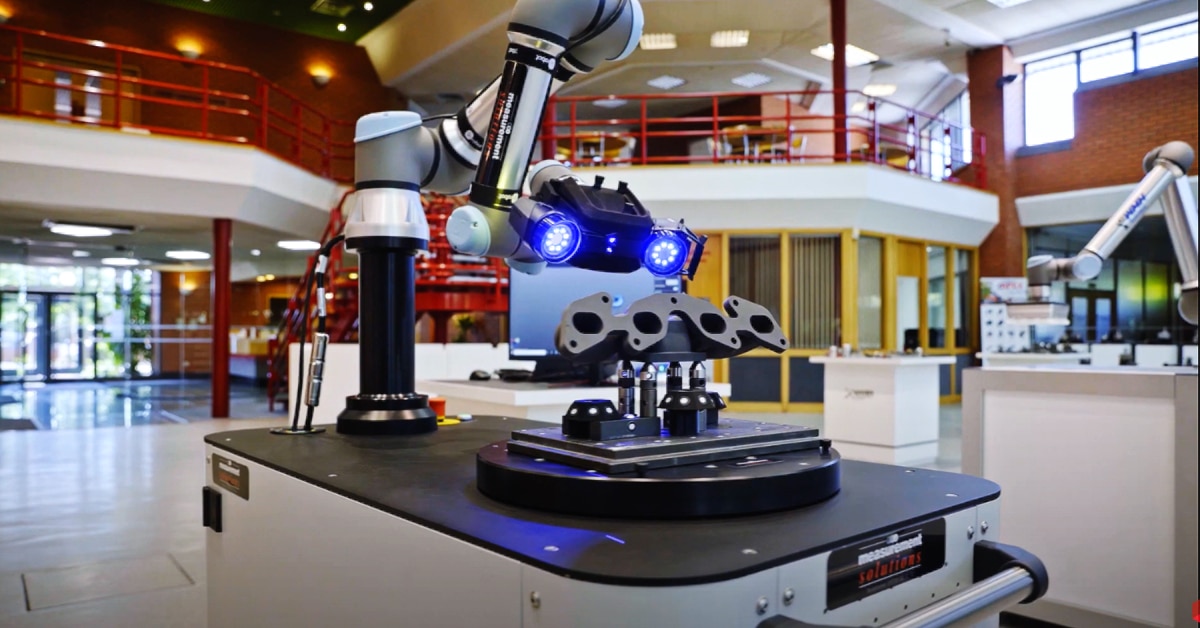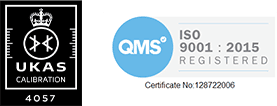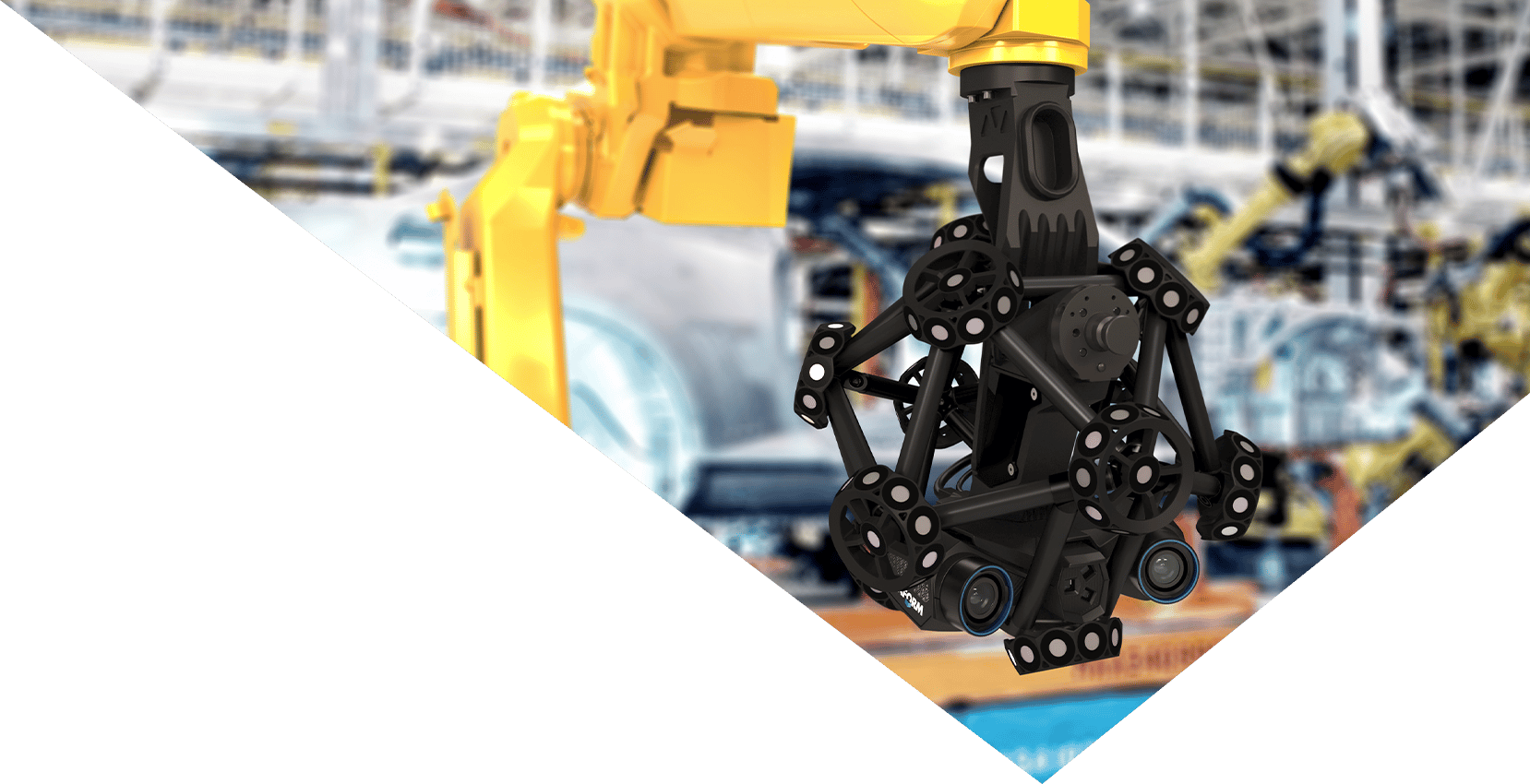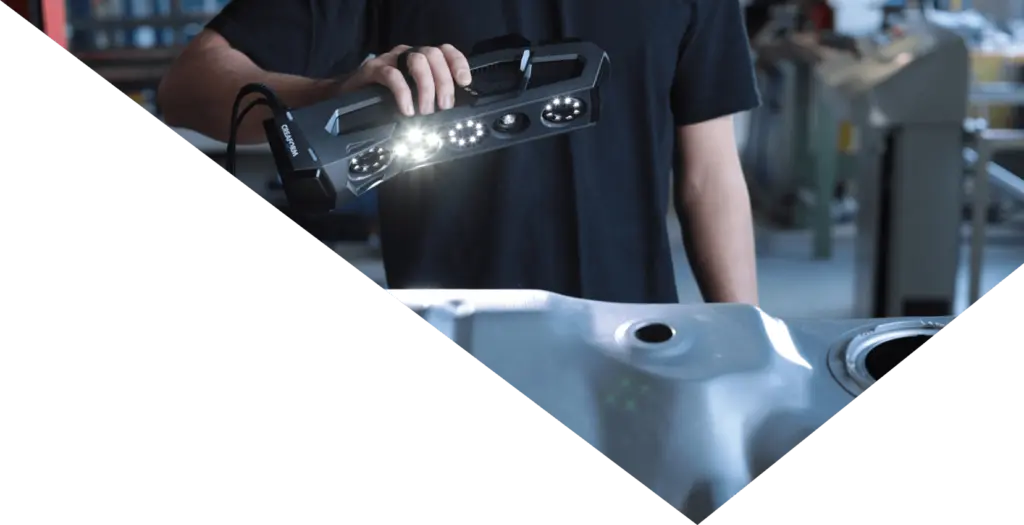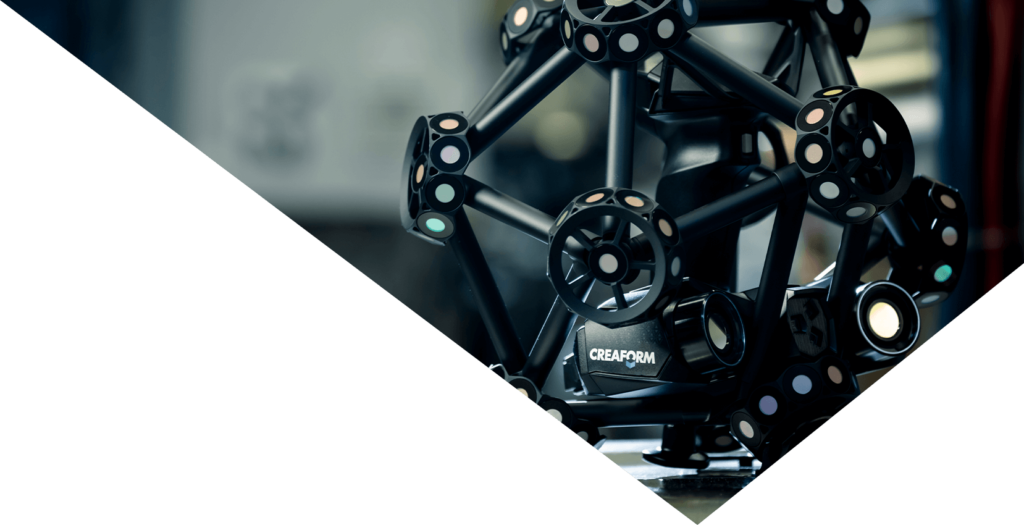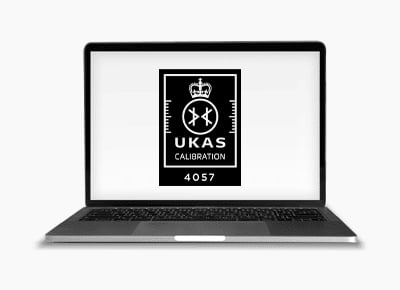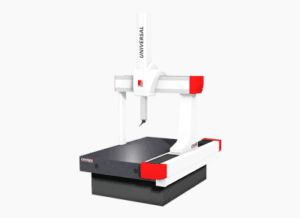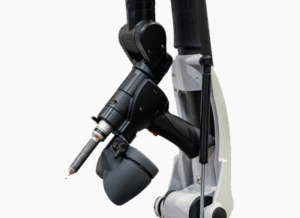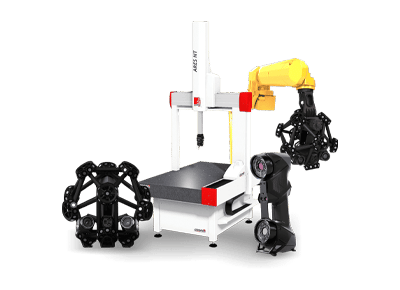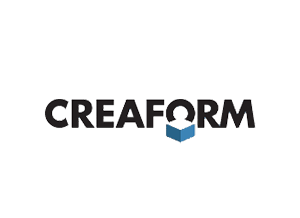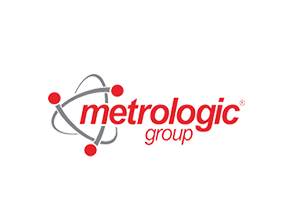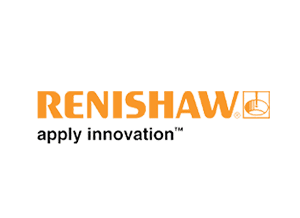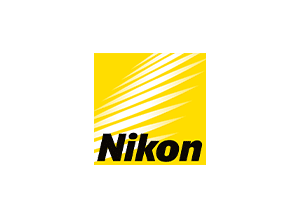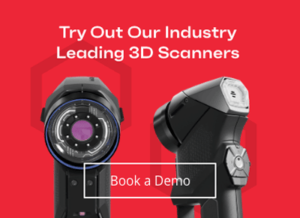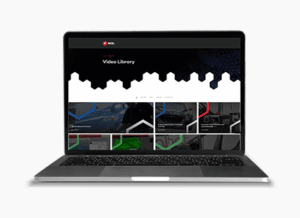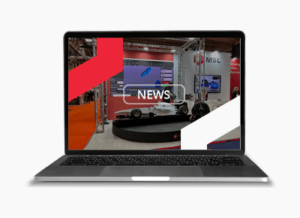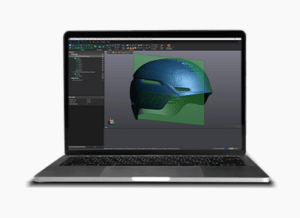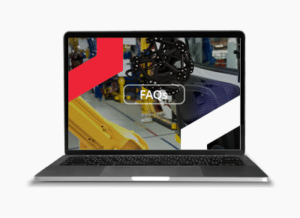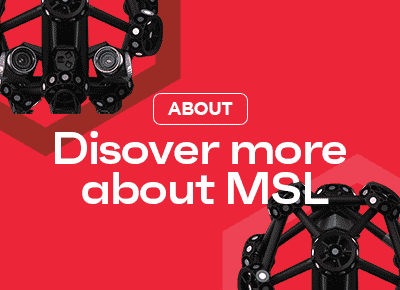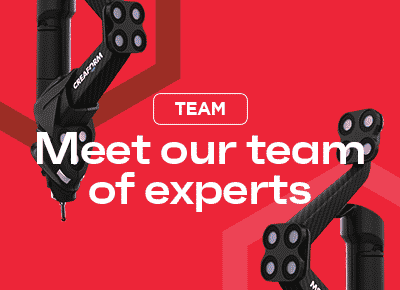Automated Scanning Solutions for the Shop Floor
Automation is the use of technology to produce and deliver parts with minimal human intervention. By integrating automated systems into the manufacturing process, you can improve efficiency, reliability, and repeatability of many tasks that were previously performed by humans, meaning their focus can now be redirected to less repetitive and more judgment-intensive activities.
By reducing scrap rates, production waste, and rework, automation contributes to continuous improvement and productivity gains. We hope to help inform and guide manufacturers that may be interested in implementing automated solutions, or perhaps want to maximise the use of an existing Cobot for automated and portable scanning, or even upgrade an existing handheld scanner giving the option for an automated scanning function.
If you are considering moving to an automated solution for your Quality Control and Inspection processes, then please read on to explore the various options that we are able to provide you with.
Key advantages of Automated Quality Control
Before we discuss the various options MSL can offer you, let’s look at some of the benefits that Automated 3D scanning provides for improved quality control and inspection processes.
Here are some of the key advantages:
Improved productivity
- Conduct AQC inspections right on or very near the production line to optimise productivity.
- Measure more parts and more dimensions per hour
- Measure only the critical dimensions on a larger number of parts, increasing the number of parts measured per hour
- Measure the same number of parts, but get more information on each of these parts to build a history in order to present better traceability
- Detect failures more quickly, and apply corrective actions to pre-empt downtimes and respect production timelines
High Accuracy: Automated 3D scanners can capture precise and detailed measurements of objects, ensuring high accuracy in quality control. This allows for better detection of defects, variations, and deviations from the required specifications.
Time Efficiency: Compared to traditional manual inspection methods, automated 3D scanning significantly reduces the time required for quality control. Scanning large or complex objects can be done quickly, enabling faster inspections, and minimising production downtime.
Comprehensive Data Capture: 3D scanners capture a wealth of data about an object, including its shape, dimensions, and surface texture. This comprehensive data allows for a more thorough analysis and evaluation of the product’s quality.
Non-Contact Inspection: Automated 3D scanning eliminates the need for physical contact with the object being inspected. This is especially beneficial for delicate or sensitive objects that could be damaged by traditional contact-based inspection methods.
Objective Evaluation: By providing accurate and quantifiable data, 3D scanning enables objective evaluation of the inspected items. This reduces subjective judgment and enhances the consistency of quality control assessments.
Defect Detection and Analysis: Automated 3D scanning can identify even subtle defects, such as surface imperfections, cracks, or deviations from the expected geometry. This helps in identifying and rectifying potential issues early in the production process.
Documentation and Traceability: 3D scanning generates digital records of the inspected objects, creating a detailed and reliable documentation trail. This documentation aids in traceability, quality assurance, and can serve as evidence in case of any disputes or recalls.
Integration with CAD and Metrology Software: 3D scanning seamlessly integrates with computer-aided design (CAD) and metrology software. This allows for direct comparison between the scanned object and the CAD model, facilitating the identification of deviations and aiding in quality control analysis.
Cost Savings: While the initial investment in 3D scanning equipment and software may be significant, the technology can lead to cost savings in the long run. Faster inspections, reduced errors, and improved quality control can result in fewer defects, rejections, and rework, thereby lowering overall production costs.
Process Optimisation: The data captured by 3D scanning can be used to analyse and optimise manufacturing processes. By identifying areas of improvement and implementing corrective actions based on the insights gained, companies can enhance overall quality, productivity, and efficiency.
Overall, automated 3D scanning for quality control and inspection provides improved productivity, higher accuracy, faster inspections, objective evaluations, and improved documentation, leading to enhanced product quality and process efficiency.

The worlds attention is focused on a future that is guided by the concepts of ‘Industry 4.0’ and a move towards an Automated Factory and is something that can’t be ignored. However, adoption of Automated technology within the UK Industry has been slow to date, which is why MSL has developed the RoboSCAN-R for manufacturers’, to help facilitate their first steps into automation and automated metrology for inspection and quality control. We have tried to keep the adoption simple and by doing so hope to remove the perception that robot trajectory planning and the creation of inspection routines needs dedicated skills and training.
MSL provides a number of different AQC options; you may already utilise a Creaform 3D Scanner and want to automate your processes, you may have a Cobot in action, but want to enhance its capability by introducing a 3D Scanner or you may even be looking to take you first steps into both Automation and 3D Scanning and are looking for an effective solution to meet your needs, so let’s explore the options available.
Take your first steps into Automated Quality Control
Measure where you manufacture
The RoboSCAN-R is an integrated solution utilising the Creaform HandySCAN with a 6 axis Universal Robot. The ‘off-the shelf’ solution is completely integrated with a specially designed portable workstation, inclusive of rotary table. Our vision for this solution is to offer OEM’s, Tier one, Tier Two and SME’s access to automated quality control, at an affordable price.
Simplicity in application was paramount and therefore integration with the UR collaborative robot, allows part programming in minutes.
We believe having the versatility to operate the HandySCAN manually, for reverse engineering applications and single component inspection, or quickly attaching the scanner to a robot for medium and high-volume inspection routines, provides our customers with the best scalable solution on the market, with a more competitive ROI.

What does the RoboSCAN-R have to offer?
Fast Set Up: Handheld scanning to automated Inspection in seconds
Our robust yet simple mounting bracket means we can attach or remove the scanner in seconds. The portable workstation includes a robot I/O module with a pre-programmed calibration routine, meaning calibration is performed after installation with a single press of a button.
Portability: You can move this system freely to different locations within your factory, no need for temperature-controlled environments, or robot guarding unlike industrial robot solutions or co-ordinate measuring machines (CMM’s).
Integration: Single Button Operator Press, for complete closed loop autonomous part inspection
As a completely integrated solution, the scanner and robot can be programmed to scan your part in minutes, by manually driving the robot, or if desired, through simulation software we create path planning for off-line programme creation. After the one-time path planning is complete, our closed loop software and robot I/O module means any operator or robot, simply loads the next component on to the fixture or rotary table, and with a single press of a button the component is scanned again with and a full inspection report generated and saved for any further trend analysis. This requires no special training or skill deployment for the shop floor operative.
Productivity: Blue Laser Technology With 22 Laser Lines
Compatible with all Creaform HandySCAN 3D scanners, although we believe the Black range offers the most productive solution. Unlike other small volume scanners, the Blue laser technology means there is no need for any surface preparation or spray on highly reflective components. Combined with the 22 laser lines, we scan 1,300,00 points per second making this solution perfect for high productivity gains, with a resolution as low as 0.025mm if desired for fine detail capture.
Watch to see how easy it is to set up and get started with the RoboSCAN-R
Why choose the RoboSCAN-R?
- Accreditation – Based on VDI/VDE 2634 part 3 standard ISO 17025
- Fast Setup – Transition from manual single part scanning to full autonomous scanning in seconds.
- Scan any material – Black, Chrome, Aluminium or paint finished surfaces.
- Multi-Tasking – enables one operator to serve multiple workstations.
- Production Reporting Database – easily retrieve instantaneous feedback on production status or retrieve historical inspection data.
- Compatibility – with all major metrology software’s
- Flexible fixturing – Touch screen pendant for program management and Robot control.
- Simplified Software – interface training & fewer operator skills required – remove the CMM bottleneck.
- Robot I/O – compatible with the Creaform MetraSCAN-R and linear rail systems for larger components or in-line scanning systems.
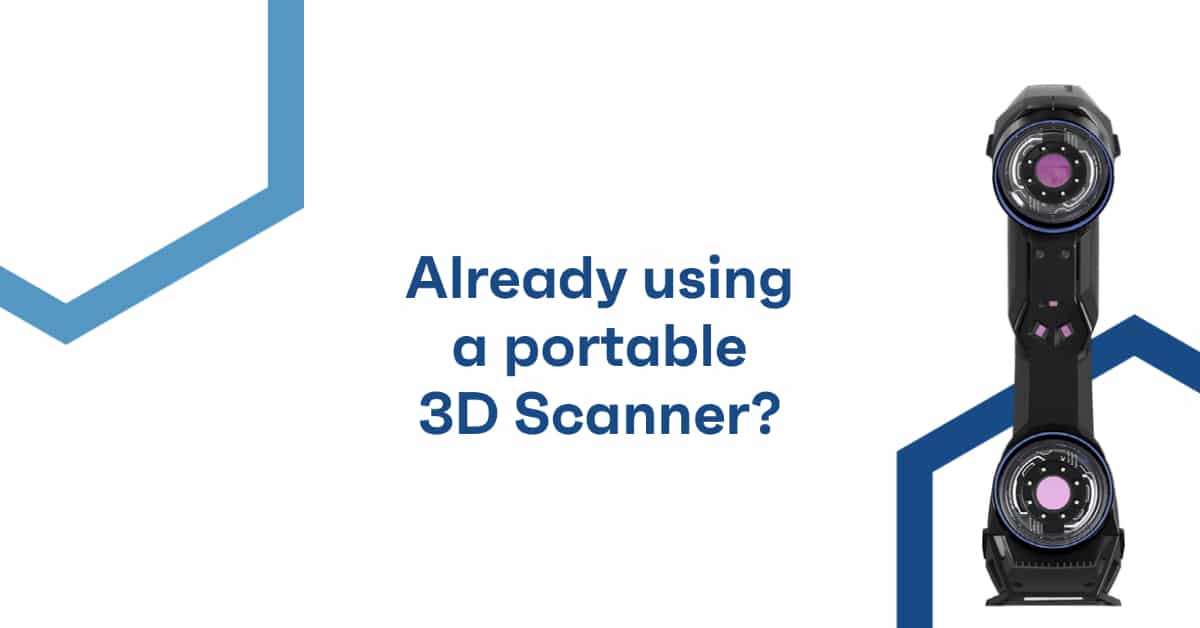
It may be that you already have an existing Creaform Scanner and are considering upgrading to a RoboSCAN-R for Automated and portable scanning.
In this scenario you would require a mobile Cart bundle (with integrated motorised turntable), a UR5e or UR10e Robot and IO Module software to provide a closed loop for complete automation.
All major metrology software is supported and so can be integrated with your existing and preferred software, or we can supply a recommended package.
All automated upgrade packages include training, integration and setup and are fully supported by UK based OEMs and partners.
Upgrading to full automated scanning without complexity:
- No physical integration needed as Creaform’s IO module software configures a direct connection between the Robot controller and the Inspection software.
- No additional Robot programming software (or skills) required: easy to use and intuitive teach and learn directly using Cobot.
- Quick release clamps designed specifically for your scanner allows for continued use of your HandySCAN as a portable scanner, with automated batch inspection switchover within minutes.
- Market leading Cobot from Universal Robots with UK support, training and warranty for peace of mind.
- Can be offered as a bespoke setup/integration if required for specific applications.
Whats included:
- The Cart
- UR collaborative robot
- IO Module
- Clamp
- All Training
- Optional Inspection software and training if none already in place

You already have an existing Cobot and you would like to maximise its use for automated and portable scanning. In this scenario you would simply require a Creaform HandySCAN (choice of HandySCAN Silver 700 Elite or HandySCAN Black Elite), IO module software, Laptop, and Inspection software of your choice to achieve fully automated scanning and inspection.
All system upgrades are supplied turn-key, including integration and training from UK based partners and a mobile cart will allow you to have a mobile solution for the shop floor with an integrated turntable.
Highlights of upgrade package:
- Utilise your existing UR Cobot and add automated scanning and Quality control to your processes. The professional metrology grade Creaform HandySCAN can be seamlessly retrofitted to the UR5e or UR10e Cobots. The HandySCAN is a portable handheld scanner that can be used for both your manual and automated applications.
- No physical integration needed as Creaform’s IO software module allows direct configuration between the Robot controller, scanner and inspection software. You can launch full inspection programs with a single click directly from the PolySCOPE pendant.
- Use simple teach and learn to generate waypoints with automated handshakes, integrated into the supplied templates.
- A mobile cart with integrated turntable (RoboSCAN-R) can be fully supplied to mount your Cobot for mobile shop floor inspections, or integrated without for bespoke applications and mounting options
- Choice of leading inspection software’s can be recommended and supplied
Whats included:
- The Cart (Unless you are planning to use the Scanner in a fixed location)
- HandySCAN (HandySCAN 700 Elite or HandySCAN Black Elite)
- IO module
- Clamp
- Laptop
- Inspection Sofware
- All training
Case Study: An Automated Measurement Strategy
Coventry-based manufacturer Unipart Powertrain Applications (UPA) is part of the wider Unipart Manufacturing Group (UMG). UPA is a leading Tier 1 supplier of components to the global automotive industry and yellow goods and electrical components for the rail industry.
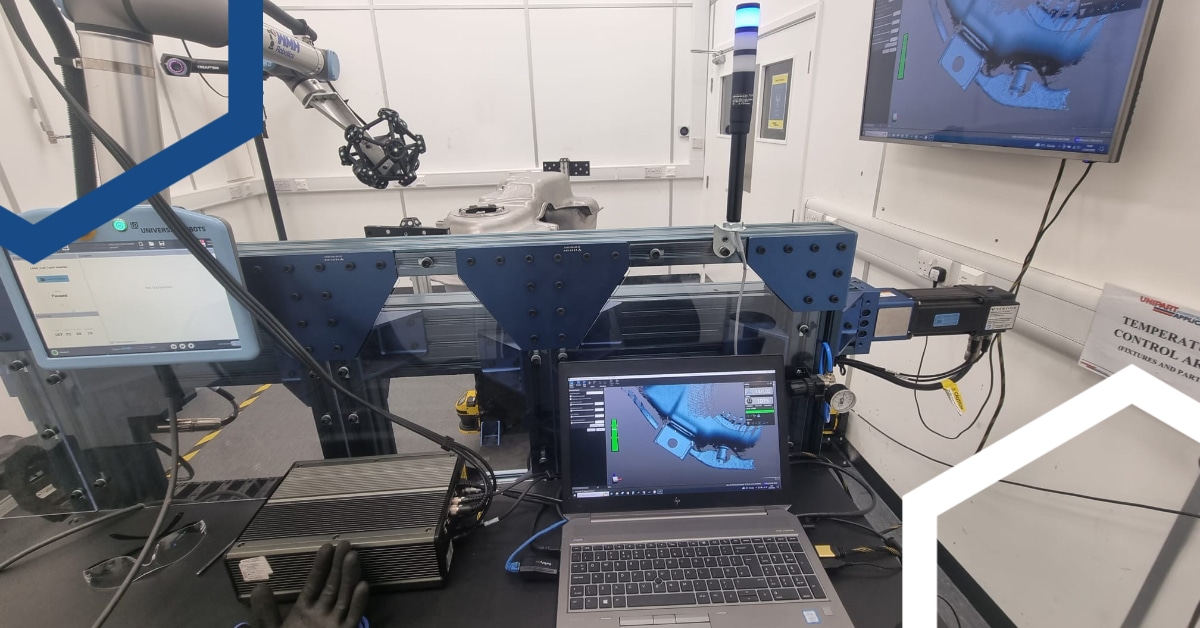
UPA have used Creaform Technology for a number of years, the original objective for using the 3D scanning technology was to improve speed, accuracy, and versatility in relation to conventional measurement strategies. This innovative technology achieves all three of these goals whilst providing UPA the ability to showcase and demonstrate cutting-edge technologies to their customers.
However, due to the complexity and level of detail of the product being inspected, combined with the frequency of inspections, meant that significant manual input was needed for the scanning and processing of the results over the course of two shifts. So on that basis, UPA engaged with MSL to find a solution to address the high level of manual input and created an automated measurement strategy to meet their requirements.
Read the case study in full to find out more about the challenges faced and the outcomes that were achieved through the adoption of an Automated Measurement Strategy
AQC For A Better Bottom Line
As manufacturing companies around the world implement automation into their quality control processes, they see the benefits of finding defects earlier in the manufacturing process and limiting human error. As they list fewer scrap parts, record less waste, and resort to minimal rework, their bottom line also improves.
To summarise, automation enhances the efficiency, reliability, and repeatability of manufacturing processes, enabling companies to reduce their production costs, deliver more and better-quality products to their customers, whilst also getting a return on their investment quickly and efficiently.
